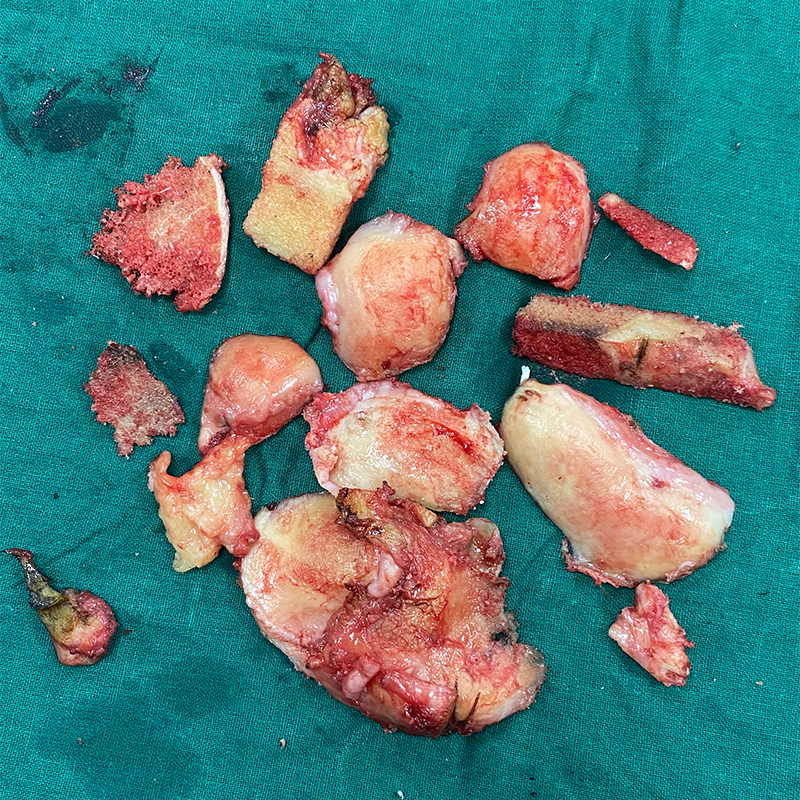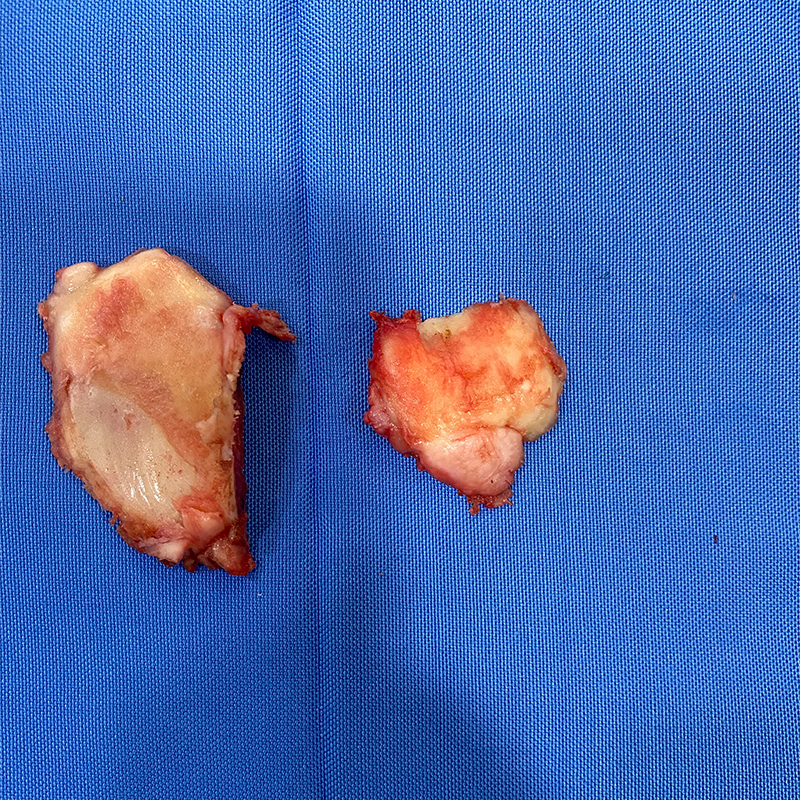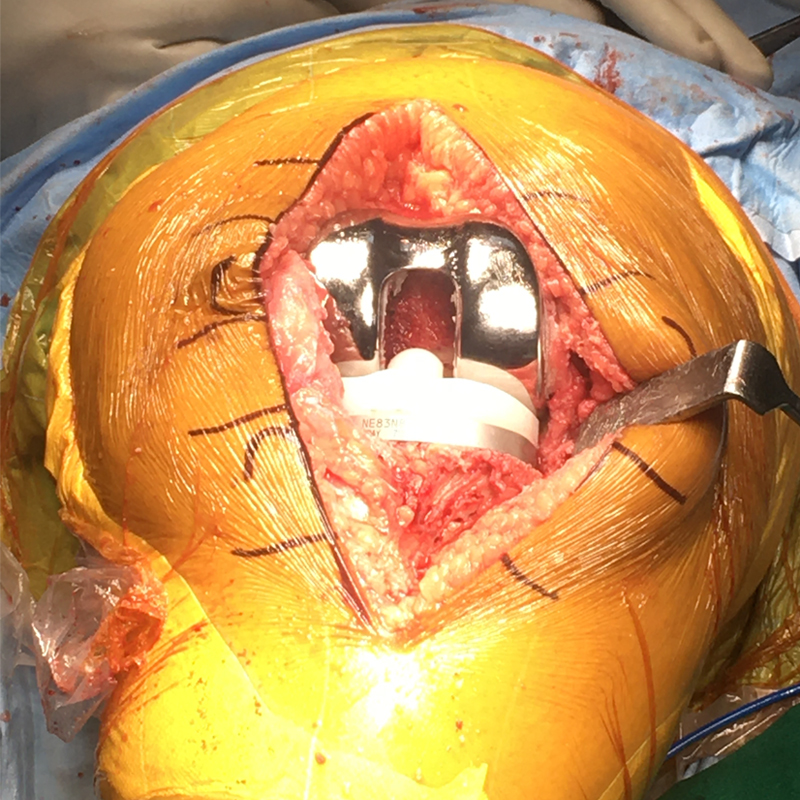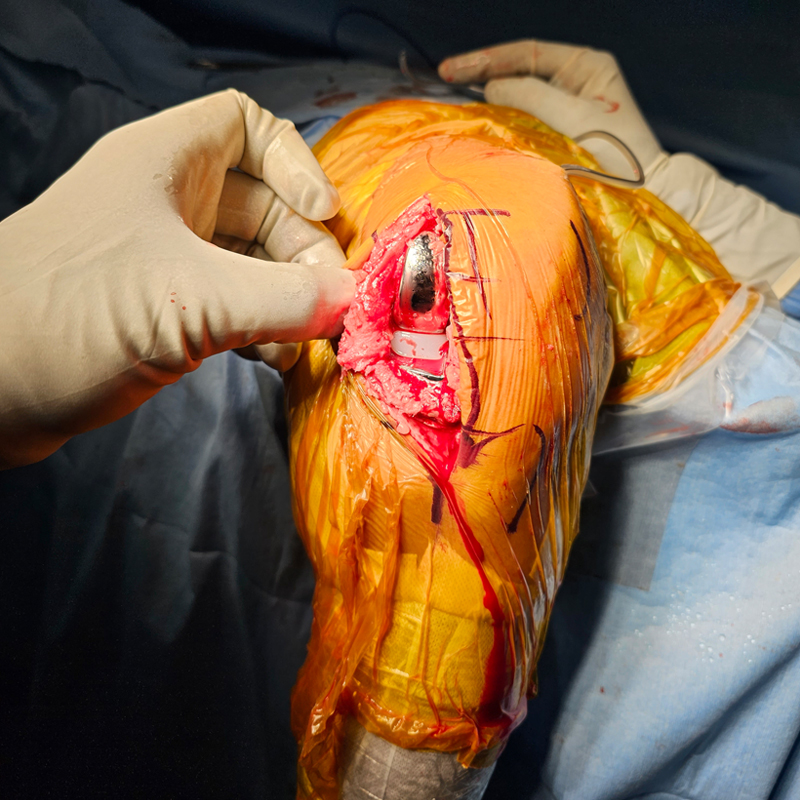Patients experiencing knee symptoms limited to predominantly one compartment are good candidates for partial knee replacement.
 (Left) Illustration of a normal knee joint: The medial, lateral, and patellofemoral compartments are shown with red arrows. (Right) An X-ray of a normal knee joint showing healthy space between the bones.
(Left) Illustration of a normal knee joint: The medial, lateral, and patellofemoral compartments are shown with red arrows. (Right) An X-ray of a normal knee joint showing healthy space between the bones.The knee is divided into three major compartments:
In majority of patients, degeneration of cartilage starts from inner (medial) compartment of knee joint. Advanced osteoarthritis that is limited to a single compartment may be treated with a unicompartmental or partial knee replacement. During this procedure, the damaged compartment is replaced with metal and plastic. The healthy cartilage and bone, as well as all of the ligaments, are preserved.
Research shows that nearly 50% of all knee replacement patients could be candidates for partial knee arthroplasty.
In partial knee replacement, only one compartment of knee is resurfaced. This can be done through minimally invasive muscle sparing approach. Anterior cruciate ligament, one of the most important stabilizer of knee, which is sacrificed in total knee replacement; is preserved in partial knee, providing good stability to knee joint.
For these reasons there are a number of potential benefits. These are:
The disadvantage of partial knee replacement compared with total knee replacement is the potential need for more surgery. For example, a total knee replacement may be necessary in the future if arthritis develops in the parts of the knee that have not been replaced. The need for additional surgery is slightly higher for partial knee replacement than for total knee replacement.
 Bone removed for total knee replacement
Bone removed for total knee replacement Bone removed for partial knee replacement
Bone removed for partial knee replacement Exposure required for total knee replacement
Exposure required for total knee replacement Exposure required for partial knee replacement
Exposure required for partial knee replacementPatients experiencing knee symptoms limited to predominantly one compartment are good candidates for partial knee replacement.
Partial knee is mainly performed for medial compartment osteoarthritis.
Patients whose X-rays show bone-on-bone disease on X-rays, with correctable deformity and intact ligaments are most suitable for this operation.
If you have any of the following characteristics, you may not be eligible for the procedure:
Partial knee is performed under sterile conditions in the operating theatre. You will be anaesthetised so that you don't experience any pain or discomfort during the operation.
A vertical incision about 10cm long is made over your knee and the worn out joint surfaces are removed. The lower thigh bone (femur) surface is replaced with a new rounded metal surface and the upper shin bone (tibia) surface is replaced by a flat metal surface. A plastic insert (called a "bearing") is then placed between these two metal components so they can glide smoothly on one another when you bend and straighten your knee. The wound is closed with sutures or surgical clips. It is then dressed with a sterile waterproof dressing and wrapped in a bandage.